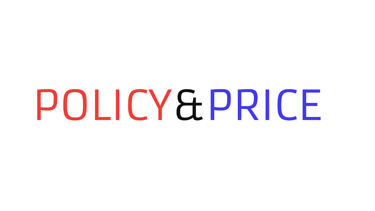
Top 3 Economic Stories this Week
The Impacts of a Hopeful End to the U.S Government Shutdown
On the 10th November we watched as global stock markets rose, after the longest United States federal government shutdown appeared to be close to an end. The hope that collecting missing data around employment and inflation would resume after the US Senate passed the funding bill (to eventually reopen the government), boosted confidence in markets. Asian and European markets responded strongly to the news, as the pan-European STOXX 600 jumped by 1.1%, and the FTSE 100, reached a new closing high, displaying positive signs in markets. However, even among the optimism, key uncertainties remain on the government shutdown issue. For example, it is important to note that the funding package is only temporary, extending to around the end of January rather than that of a full-year budget. Clarity still may remain limited on the economy despite the good news, as many official U.S. economic data (which investors heavily rely on), remains delayed, i.e., the benefits won't be instant. Therefore, market's rallying displays the relief that the potential end to political gridlock entails, but important economic data remains unknown. Some investors that bought stocks on the back of positive sentiment may be left exposed if the data disappoints once it's released.
US Treasury Yields see Increase
During the week, markets watched an uptick in U.S. 10-year Treasury yields by 3.5 basis points - reaching 4.146%. Higher yields displays more expensive borrowing costs for the government, making investors cautious around buying riskier assets. It is likely that until we get clearer economic data coming out of the US and the Fed's path is clearer, volatility in FX markets and bond yields will probably continue.
UK Gilts See Record High for Bids in
The UK Debt Management Office sold a $4.25bn index-linked gilt on 12th November, maturing in 2038 - attracting more than £69bn in bids, breaking the record for the largest amount of investor demand for a UK inflation-linked government bond. Slow growth, weak investment, and uncertainty around the autumn budget, makes such strong demand surprising. However, the appetite for such debt signals that investors are looking for assets that are inflation protected, despite growth worries. We also interpreted the strong bid for UK debt as investors remaining confident in the UK's funding framework, i.e., such bonds should be fairly safe and reliable. With inflation protection and safe yields being hard to find these days, the UK debt shows that even economies in "riskier" situations (with the upcoming autumn budget), can attract strong demand if they meet such criteria, protecting investors from inflation.
Policy Pulse: U.S., U.K., & Europe
The Fed continued to stress the need to remain data dependent this week, arguing that without the core economic data being held back by the shutdown, confident decisions cannot be made. Furthermore, although officials within the Fed have signalled that inflation progress is ongoing, they need greater and consistent confirmation before they can cut rates again. Traders seemed to go back on previous beliefs that the Fed would cut rates in December, now pricing the next cut to be likely in the beginning of 2026. In the U.K., the Bank of England has maintained its stance on policy, noting that while inflation is falling in the United Kingdom, underlying pressures such as wage growth remain important in the pursuit of economic strength and stability. The Bank of England is wary of the political and economic uncertainty that the upcoming Autumn Budget brings, as any major change in fiscal policy will of course affect the Bank's approach. As for when the Bank's next cut is, markets expect it to be in late Q1, or early Q2 2026, but this remains highly dependent on the budget, as well as the potential for momentum on the progress made for inflation. Meanwhile, the Central Bank has said that current policy settings are "appropriate", portraying to markets that the Bank is in no rush to adjust interest rates. Growth across the bloc remains pretty soft, notably in Germany - but some analysts suggested that now that inflation has cooled down, the ECB should be able to avoid further tightening. At the moment, the ECB are being perceived as slightly more predictable than the Fed or the BoE - which is largely due to the fact that the latter central banks are either dealing with data disruptions or a major upcoming budget.
Industry Spotlight: Esports and Gaming Infrastructure
On these reports, we usually look at tech, finance, retail, etc, for our industry spotlights. This week, I wanted to give the spotlight to an industry that isn't spoken about as much. With major investment announcements, infrastructure projects, and content deals rising, the global esports and online-gaming "ecosystem" is developing into a solid economic sector with real financial weight. Despite stock sell offs this week, venture capital flows into gaming hardware, and into immersive experiences, have picked up - displaying consumption habits potentially shifting digitally. This could be significant in the UK, where in other sectors, demand remains weak - but this does not hold true for our spotlight, as gamer engagement remains high. For example, gaming is one of the first industries where consumers pay for digital goods comfortably, with ease, proving that consumers value the utility that virtual goods bring, as much as that of physical goods. Furthermore, the monetisation of gaming relies on converting time spent into revenue streams such as subscriptions and in game purchases, displaying the effectiveness of such a model for revenue potential as the industry generated $187.7bn of revenue last year. This remains important as such models are becoming the blueprint for social media, AI tools and content platforms, where their monetisation capabilities have been questioned recently.


Economic Analysis. Political Analysis. Insightful Analysis.
Explore political and economic affairs with us.
© 2025. All rights reserved.


